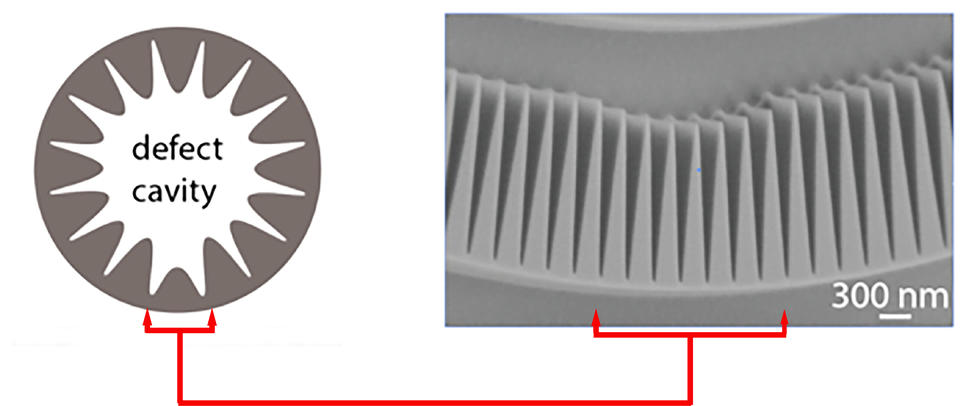Researchers at the National Institute of Standards and Technology (NIST) and their colleagues have significantly improved the ability of a type of optical microcavity to enhance the interaction between light and matter. An optical microcavity is essentially a light-trapping device and strengthening the light-matter interactions it supports is crucial for a panoply of applications in optical physics.
For instance, the interaction between light and individual atoms forms the basis for building quantum logic gates. The interplay between light and nanoparticles such as biomolecules is necessary for developing sensitive environmental sensors; and encounters between light and nonlinear materials, which respond to photons in unusual ways, are essential for constructing microfrequency combs.
To strengthen the interaction between light and matter, Xiyuan Lu and Kartik Srinivasan of NIST and the Joint Quantum Institute, a research partnership between the National Institute of Standards and Technology (NIST) and the University of Maryland, and their collaborator Andrew McClung of the University of Massachusetts at Amherst, combined the best features of two types of optical microcavities.

One type, the microring resonator, features a ring-shaped device about the width of a human hair. Light from an external laser races around the perimeter of the ring thousands of times until it builds up high intensity. The microring resonator is particularly good for trapping light for long periods of time, can support many different frequencies at the same time, and is straightforward to design. The other type, a photonic crystal, has a structure that confines light to a smaller region but requires a more complex design and usually cannot operate at many different frequencies simultaneously.
The team reported details of the newly developed hybrid device, known as a microgear photonic crystal ring, in an article in the January 2022 issue of Nature Photonics, posted online December 20, 2021. A news release from the University of Massachusetts in Amherst provides further information. The study is part of the NIST on a Chip program and is partly supported by the DARPA SAVaNT program.
Paper: Lu, X., McClung, A. & Srinivasan, K. High-Q slow light and its localization in a photonic crystal microring. Nature Photonics 16, 66-71, 2022. DOI: https://doi.org/10.1038/s41566-021-00912-w

